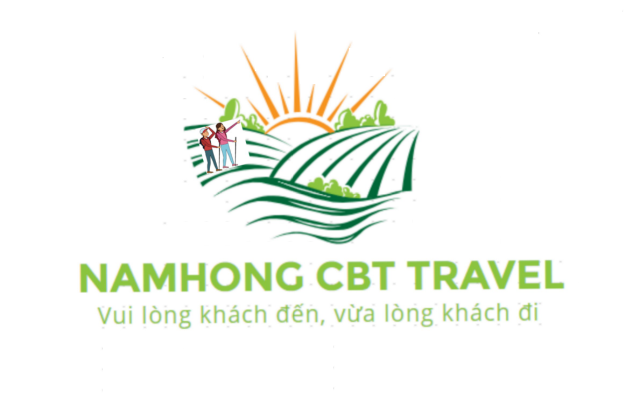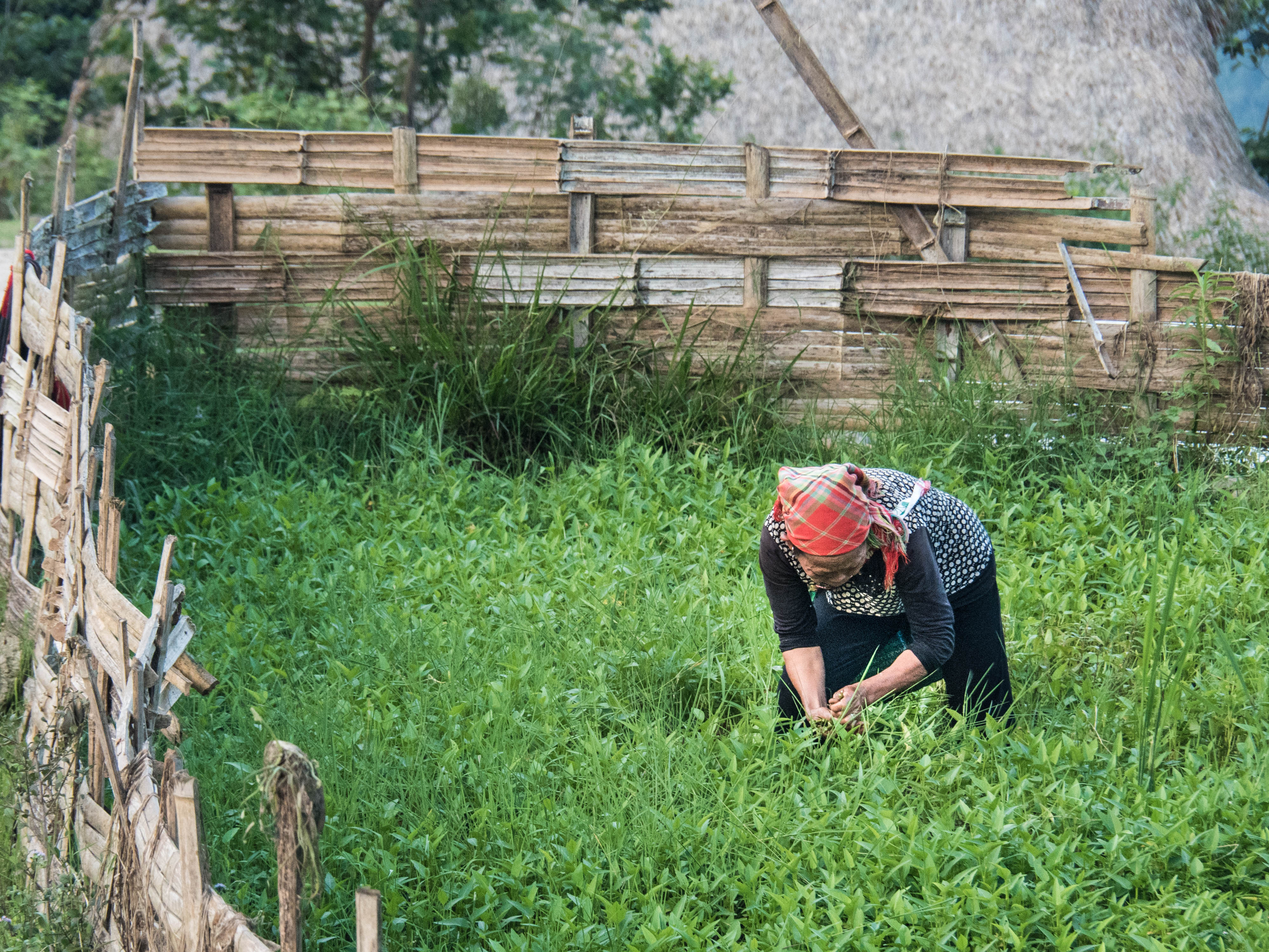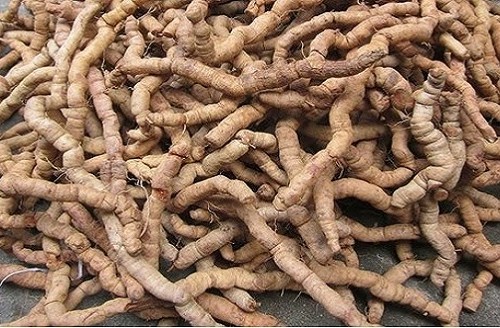Passing through Ha Giang
Ha Giang is not only known as a mountainous province with majestic landscapes and vibrant festivals and customs, but also for its nature which has been harnessed by its people for food and products. There is a unique culinary culture which utilises what is available from nature, which cannot be found elsewhere. besides the highlands of Ha Giang. Check out some delicious dishes and learn about both Ha Giang and the culture of ethnic minorities on your way to Nam Hong as you travel through the different districts of Ha Giang to reach Hoang Su Phi and Nam Hong Village!
Ba kích (Quản Bạ Forest)
Source: https://dongamruou.vn/
Ba kích is a type of vine belonging to the coffee family with the scientific name of Morinda officinalis stow. It grows wildly in secondary forests in the midlands and in the northern mountains, under the canopy of moist tropical broadleaf forests. In Ha Giang, it is often found in the Quản Bạ Forest.
Mint Honey (Meo Vac)
Bees are raised in natural environment and honey is harvested from the wild mint flower found only on Dong Van plateau.
Mint honey is produced here by traditional people, mainly from mint flowers and some flowers of wild herbs. Mint honey is light green in colour with a yellowish tinge. It has a distinct aroma and sweet in taste. Perfect for pancakes!
Hồng không hạt – Persimmon (Quản Bạ Forest)
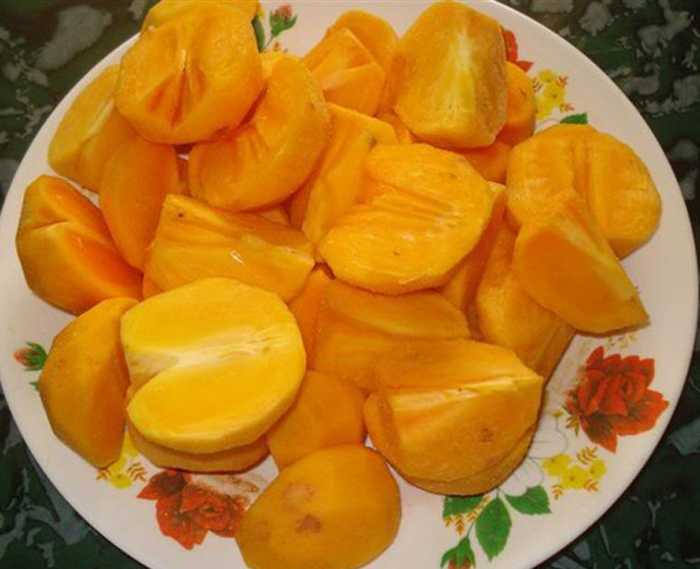
Another specialty from the Quản Bạ Forest is the Hồng không hạt, a variety of persimmon that is particularly sweet because of the natural elements of the Quản Bạ geographic area. With an average altitude of over 1000 metres above sea level, a relatively flat terrain, thick and less eroded soil layer, an all year round cool climate, the persimmons are of high quality and high productivity. The persimmons are also of a seedless variety.
The Hồng không hạt is also a native variety which has been cultivated for a long time by the ethnic minorities including the Red Dzao. The fruit is crunchy, sweet and fragrant.
Cam Sanh – Oranges (Bac Quang)

For a long time, oranges have become a specialty when people mention Bac Quang, south in Ha Giang province. It is because this land has the climatic and soil conditions to produce oranges with distinct, sweet and attractive flavors. In addition to orange colors and small stalks, Bac Quang oranges also have a very special aroma, and is very fragrant and sweet when eaten.
Tea Phin Ho (Phin Ho Village in Hoang Su Phi)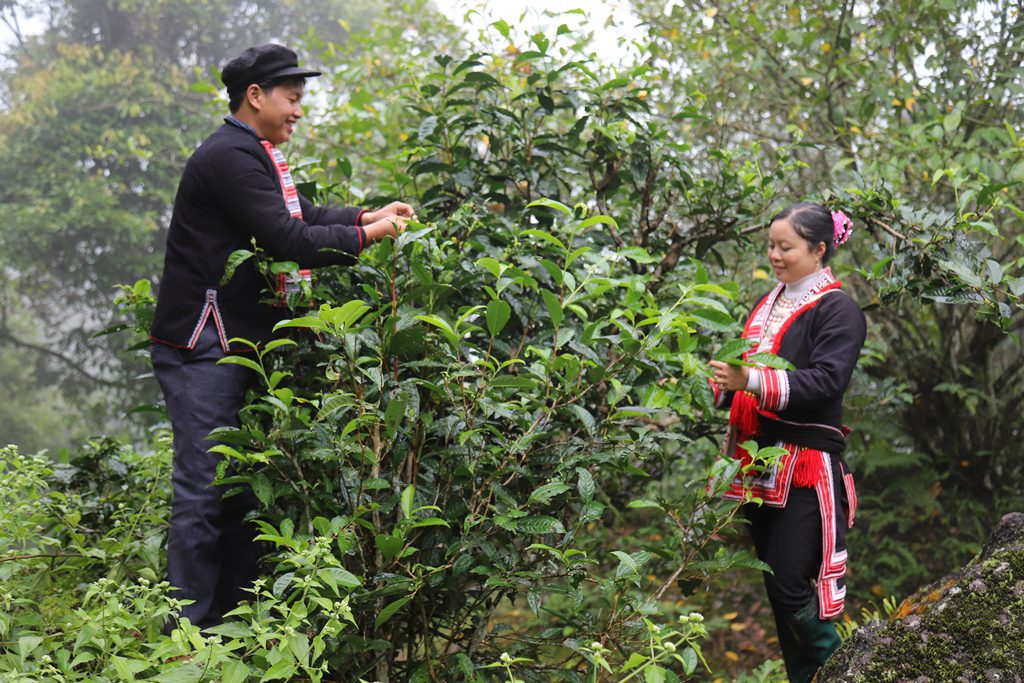
The San Tuyet (‘snow’) tea grows on a cliff at a height of thousands of meters on the Phin Ho mountain range with a cool year-round climate. The tea plants are over 200 years old, in Phin Ho village also found in Hoang Su Phi. The cultivation and processing process does not use chemicals at all. The taste of tea here tastes delicious and pure, a gift of nature.
Corn Wine
Corn wine is a specialty of Ha Giang that can never be missed in the markets.
In each market, in addition to the everyday agricultural products, there is the indispensable “specialty” of corn wine. The wine is cooked from the native corn of the rocky plates in the north of Ha Giang (Meo Vac, Bac Quang, Yen Minh and Dong Van) along with traditional yeast, so it is sweet, aromatic and corny. Corn wine is an indispensable drink when enjoying victory.
Xôi ngũ sắc – 5-Colour Sticky Rice
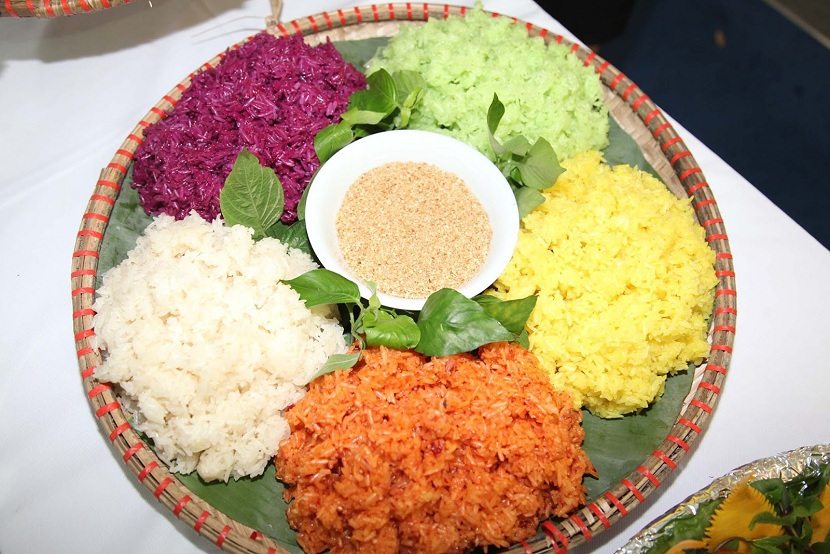
Ha Giang as a mountainous province houses many traditional ethnic groups, including the Red Dzao. Sticky rice is naturally coloured to make Xôi ngũ sắc, which refers to concepts of the universe, the philosophy of yin and yang and the beautiful and noble meaning of life.
The five-color sticky rice is made from colouring cooked sticky rice with forest leaves. The colours of sticky rice may differ depending on regional conditions. For example, red sticky rice uses gac fruit, green sticky rice uses ginger leaves, grapefruit peel, bitter bamboo shoots, and burning ash soaked with water and mixed with a little lime. Yellow sticky rice uses old turmeric, purple sticky rice uses black rice leaves.
Glutinous rice is first soaked in plain water for 6-8 hours so that the rice grain moderately blooms. The rice is then divided into 5 parts, and coloured separately, requiring skill to ensure the colours are even by colouring the easy-to-colour sticky rice first.
Mèn men – Rice with Corn and Cassava
Mèn mén is a popular dish in the highlands, especially when there is not enough rice to eat. It is made from adding corn and cassava to rice. The corn added to Mèn men is dried and milled such that it is smaller than the grain and thus easy to store.
